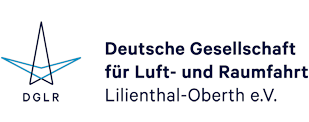DGLR-Publikationsdatenbank - Detailansicht
Autor(en):
G. Jacob, J. Tuppatsch, D. Schmidt, A. Pototzky, R. Rodeck, F. Raddatz, G. Wende
Zusammenfassung:
High-performance multi-functional structures such as composites with integrated sensors for Structural Health Monitoring (SHM) or with integrated electrical conductor tracks are promising technologies for lightweight aerospace design. The reliability and performance of these challenging aerospace structures are ensured by suitable inspection and maintenance. However, the inspection of such structures via conventional Non-Destructive Testing (NDT) methods encounters challenges for the accurate damage detection, localization and characterization. In case of structural damages, using multiple NDT methods can ensure an efficient damage assessment. Key challenges to be solved are the proper selection of complementary and applicable NDT methods, the information content and quality about the structure which can be obtained by a single method, and the combined achievable information quality. In this research, Carbon Fiber Reinforced Polymer (CFRP) specimens with bonded conductor tracks with artificially created defects and bonded piezoelectric lead zirconate titanate (PZT) sensors are considered. The composite specimens with bonded PZT sensors are impacted with different impact energy levels to create a variety of typical defects. The electro-mechanical impedance spectroscopy is used to study the adhesion of the PZT sensors to the composite specimens before and after impacts. The composite specimens are inspected using ultrasonic testing and thermography testing before and after impacts. The specific focus is on the assessment of the performance of each NDT method for damage detection in the presence of integrated functional elements. Both NDT methods are suitable for the inspection and show good performance for damage assessment. The presence of the functional elements, however, affects the quality of the damage assessment. The sensitivity of the NDT methods for a precise identification of size and depth of defects is reduced. Ultrasonic testing provides a better spatial resolution in detecting the subsurface defects as well as the size and depth of defects. Thermography is effective in detecting defects closer to the surface, but provides less detailed information about the depth of the defects compared to the ultrasonic testing. This suggests that the combination of information using suitable data formats is relevant in order to make informed decisions about a structure. Digital Imaging and Communication for Nondestructive Evaluation (DICONDE) is discussed as a potential standard data format for the exchange and fusion of NDT data from various methods.
Veranstaltung:
Deutscher Luft- und Raumfahrtkongress 2024, Hamburg
Verlag, Ort:
Deutsche Gesellschaft für Luft- und Raumfahrt - Lilienthal-Oberth e.V., Bonn, 2024
Medientyp:
Conference Paper
Sprache:
englisch
Format:
21,0 x 29,7 cm, 8 Seiten
URN:
urn:nbn:de:101:1-2411081412388.043705958338
DOI:
10.25967/630245
Stichworte zum Inhalt:
composite structure, non-destructive testing, structural health monitoring, ultrasonic testing, defect detection, inspection, thermography
Verfügbarkeit:
Download
- Bitte beachten Sie die Nutzungsbedingungen dieses Dokuments: Copyright protected
Kommentar:
Zitierform:
Jacob, G.; Tuppatsch, J.; et al. (2024): Non-Destructive Testing of Challenging Aerospace Structures. Deutsche Gesellschaft für Luft- und Raumfahrt - Lilienthal-Oberth e.V.. (Text). https://doi.org/10.25967/630245. urn:nbn:de:101:1-2411081412388.043705958338.
Veröffentlicht am:
08.11.2024
